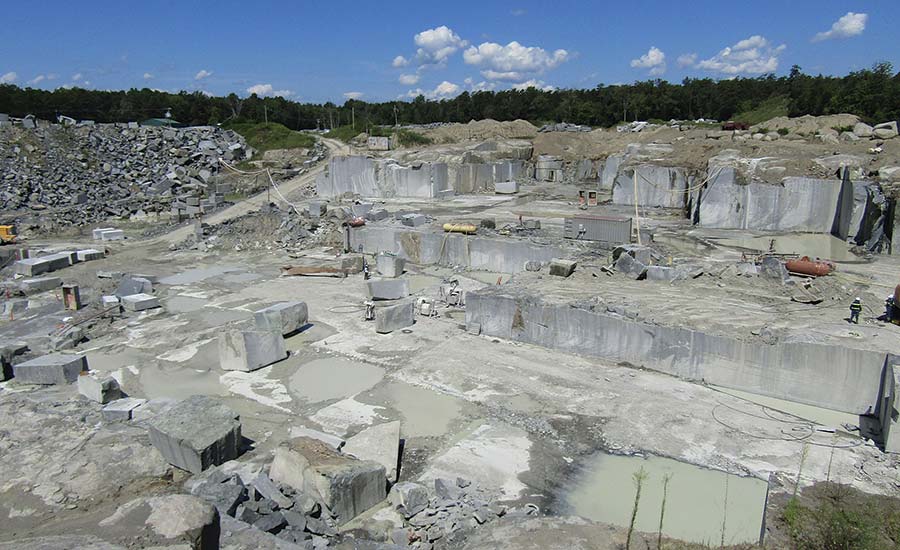Checking Out Granite Quarries in South Africa: A Comprehensive Overview
Checking Out Granite Quarries in South Africa: A Comprehensive Overview
Blog Article
Introducing the Mysteries of Granite Quarrying: Where Toughness and Beauty Meet
The globe of granite quarrying is a world where the raw toughness of nature assembles with human creativity to produce structures that stand the examination of time with an air of beauty. From the depths of quarries to the thorough sprucing up in workshops, the procedure of changing granite into building wonders is a complex dancing of custom and advancement. As we peer into the midsts of this old craft, we begin to reveal the covert ins and outs that shape the very essence of our developed environment.
The Beginnings of Granite Quarrying
In the record of building history, the beginnings of granite quarrying are shrouded in a tapestry of ancient craftsmanship and geological marvels. Dating back to old Egypt and Mesopotamia, the extraction of granite from quarries noted the beginning of a trip that would ultimately cause the production of several of the world's most famous structures.
Granite quarrying's roots can be mapped to the proficient craftsmens that recognized the stone's sturdiness and visual appeal. Through a mix of primitive tools and sheer decision, these very early quarry employees discovered granite blocks that would become the foundation of people.
As people developed, so did the strategies of quarrying granite. The Romans, renowned for their design prowess, established innovative techniques for drawing out granite to create monuments, temples, and roadways that stood the examination of time.
The legacy of these old quarrying practices remains to form modern-day style, with granite continuing to be a symbol of toughness and style in construction tasks around the globe. (granite quarries in south africa)
Devices of the Quarrying Trade
The development of granite quarrying methods from ancient people to modern-day times highlights the critical duty played by the devices of the quarrying sell shaping the market's methods. In ancient times, quarrying tools were simple, often containing blades, hammers, and wedges made from products like bronze or iron. These devices called for considerable manpower and time to essence granite obstructs from quarries.

In addition, the intro of pneumatically-driven tools and high-powered machinery has considerably decreased the physical labor needed in quarrying procedures, improving employee safety and security and productivity. As the quarrying sector proceeds to innovate, the tools of the profession remain at the forefront of driving development and shaping the more info here future of granite removal.
Drawing Out Blocks of Granite
Using accuracy machinery and progressed strategies, the removal of granite obstructs from quarries has ended up being an advanced process in the modern-day quarrying market. The first action includes determining the location and size of the granite down payment to establish the most reliable extraction technique. When an ideal site is picked, the removal procedure starts with the exploration of holes for the placement of nitroglycerins. Managed blowing up strategies are then used to disintegrate the granite into workable areas.

Sprucing Up and Finishing Methods
To achieve a flawless surface on granite blocks, knowledgeable craftsmens use a collection of thorough sprucing up and ending up techniques. After the initial removal and shaping procedures, the granite obstructs undergo a detailed polishing phase to boost their natural beauty and resilience.
In addition to sprucing up, completing techniques are put on more fine-tune the granite's look. These strategies may include flaming, honing, or cleaning, each offering special structures and finishes to match different visual preferences. Flaming, for example, includes exposing the granite surface to high temperatures to develop a rough, distinctive coating, perfect for exterior applications where slip-resistance is important. Developing, on the other hand, supplies a matte finish that is smooth to the touch, ideal for interior countertops and flooring. By meticulously selecting and using these brightening and completing strategies, artisans can change raw granite blocks into exquisite pieces click that display both strength and sophistication.

Environmental Influence and Sustainability
With the expanding focus on environmental consciousness in the sector, granite quarrying methods are progressively scrutinized for their effect on natural deposits and lasting sustainability. Quarrying for granite can have substantial environmental effects. The removal procedure typically involves the use of hefty equipment, explosives, and big quantities of water, resulting in habitat devastation, dirt disintegration, and water pollution. Additionally, the transportation of granite from quarries to refining centers produces carbon discharges, further contributing to environmental destruction. granite quarries in south africa.
To minimize these impacts and ensure sustainability in granite quarrying, market stakeholders are embracing numerous procedures. Carrying out sophisticated technologies to decrease energy consumption and water usage, recovering quarried land for environmental repair, and promoting liable sourcing techniques are some strategies being used. Moreover, qualifications such as the Woodland Stewardship Council (FSC) and the Management in Energy and Environmental Design (LEED) aid customers determine ecologically pleasant granite products.
Final Thought
In verdict, granite quarrying is a process that calls for specialized tools and strategies to informative post remove blocks of granite and polish them to a high degree of finish. While the ecological impact of quarrying can be considerable, initiatives are being made to boost sustainability techniques in the industry. On the whole, granite quarrying is a delicate balance in between using the toughness and sophistication of this all-natural rock while minimizing its influence on the setting.
Report this page